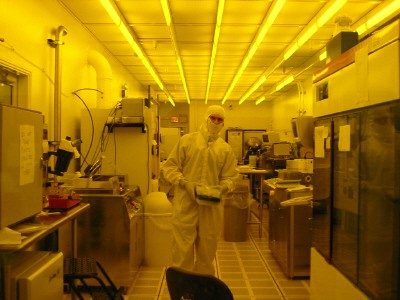By encoding information in the quantum states of subatomic particles, quantum computers have the potential to make the latest Pentium chip look as outmoded as the abacus. But before such a device can even begin to compete with its classical counterpart, we need to first find a way to scale-up individual quantum "bits". Now, physicists in the US have made an important step towards this goal by creating an ion trap on a semiconductor chip. Such microscale traps could allow many qubits to be integrated in a workable quantum computer (Nature Physics advance online publication).

Classical computers store and process information as bits with one of two values: “0” or “1”. But a quantum computer would exploit the ability of quantum particles to be in superpositions of two or more states at the same time. These “entangled” states, in principle, allow a quantum computer to outperform a classical computer for certain tasks.
One of the most exciting candidates for such a quantum bit or “qubit” is a trapped ion, whose internal energy states can be manipulated using a laser. The basic requirements for such a qubit have already been met, and very recently two groups set a new record by entangling up to eight calcium ions in a single trap. But a real quantum computer will require such trapping and manipulation to take place for millions of atoms. “This will require a departure from the typical method of fabricating ion traps ‘by hand’ and involve integrated approaches like the one reported by us,” says Chris Monroe of the University of Michigan.
Monroe and colleagues at the University of Maryland have now made an ion trap from four alternating layers of aluminium-gallium-arsenide and gallium-arsenide grown on a substrate using molecular-beam epitaxy. The team created a hole through the chip and fashioned a set of cantilevered electrodes over it using techniques routinely employed in fabricating microelectromchanical systems (MEMS). They then mounted the chip on a socket inside a vacuum, and introduced a gas of cadmium-111 atoms into the hole using a pulsed laser.
By carefully controlling parameters such as electrode voltages and the laser wavelength, Monroe and colleagues were able to produce a single cadmium ion in the trap and manipulate its quantum state. “Such ion traps look to be useful for scaling up the trapped ion quantum computer, as we can fabricate hundreds of thousands of electrodes using MEMS lithographic technology,” says the team.



